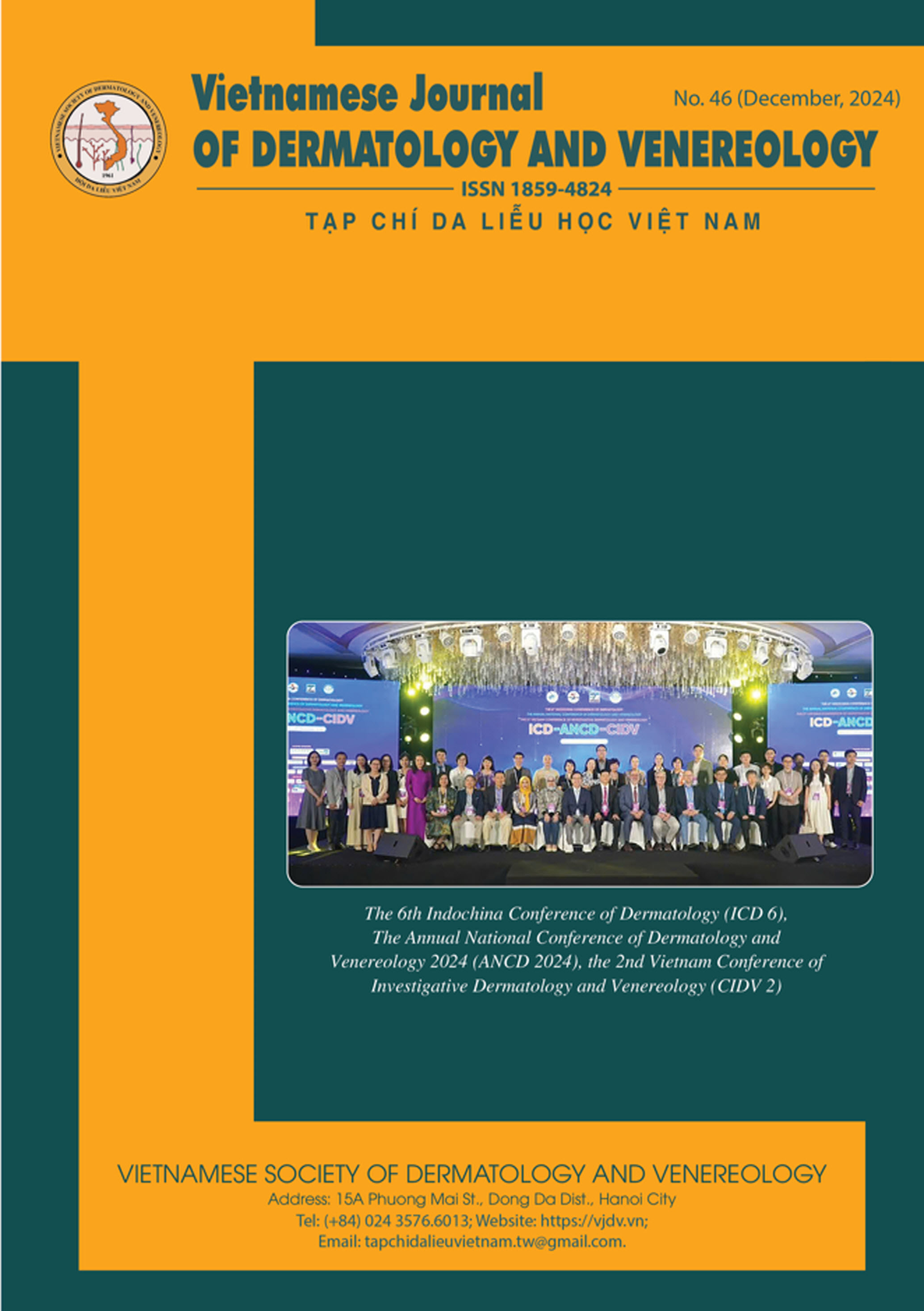THE ASSOCIATION BETWEEN ANTI-U1-RNP ANTIBODY AND SKIN LESIONS, MUSCLE INVOLVEMENT AND PERIPHERAL VASCULAR INJURY IN PATIENTS WITH SYSTEMIC SCLEROSIS
DOI:
https://doi.org/10.56320/tcdlhvn.46.196Từ khóa:
ANA 23 profile, anti-U1-RNP antibodies, organ damage, systemic sclerosisTóm tắt
Objective: To evaluate the relationship between anti-U1-RNP antibodies and skin, muscle, peripheral vascular, and renal damage in patients with systemic sclerosis.
Subjects and methods: A cross-sectional descriptive study was conducted on 55 patients diagnosed with systemic sclerosis according to the criteria of the American College of Rheumatology (ACR) and the European League Against Rheumatism (2013) at the National hospital of Dermatology and Venereology from September 2021 to September 2022. Patients were tested for anti-U1-RNP antibodies in their blood using the ANA 23 profile test.
Result: The positivity rate for anti-U1-RNP antibodies was 14.5%. Among skin lesions, the most common manifestation was sclerodactyly (87.3%), followed by poikiloderma (47.3%), and less frequently, digital edema (27.3%). The average modified Rodnan skin score in the systemic sclerosis group was 21.2 ± 6.8, with the anti-U1-RNP positive group scoring higher (27.3 ± 6.1) than the negative group (20.2 ± 5.8) (p = 0.002). The incidence of peripheral vascular damage, including the rate of periungual telangiectasia and periungual hemorrhage, was higher in the anti-U1-RNP positive group compared to the negative group (p = 0.018 and p = 0.034, respectively). The rate of elevated muscle enzymes (CK > 190 U/l) in the anti-U1-RNP positive group (75.0%) was also higher than in the negative group (17.4%) (p = 0.002). The incidence of elevated serum creatinine and proteinuria in the systemic sclerosis group with positive anti-U1-RNP antibodies was higher than in the negative group (p = 0.018 and p = 0.029, respectively).
Conclusion: Patients with systemic sclerosis who test positive for anti-U1-RNP antibodies tend to have higher rates of skin lesions, peripheral vascular damage, muscle damage, and renal damage compared to those who test negative.
Received 12 May 2023
Revised 11 July 2023
Accepted 28 August 2023





